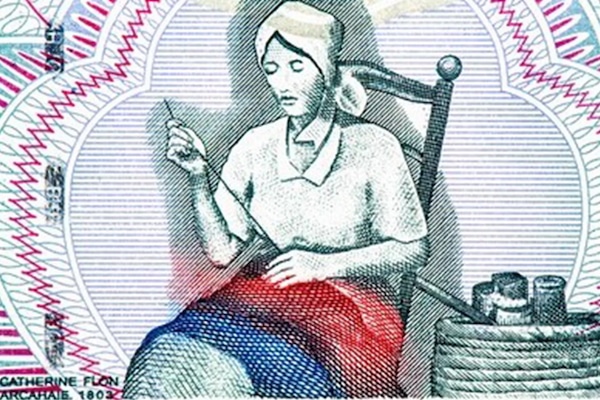The 1791 slave uprising of Saint-Domingue was the largest and most successful slave revolt in modern history. It transformed one of the wealthiest colonies in the world into a new nation led by the black leaders of the Revolution. Because Saint-Domingue was a French colony, the French Revolution was inextricably linked to the Revolution in Saint-Domingue, however, the two Revolutions functioned in largely separate spheres not least because of the ocean that separated them. The struggle for liberation took on a particularly bloody and brutal shape on the island of Saint-Domingue. Along with other French Caribbean colonies (such as Martinique and Guadeloupe), it set the stage for a centuries-long struggle for “hexagonal” France (often called continental or metropolitan France) to justify, reject, incorporate, and finally atone for their overseas colonies, and later their territories.
Black women in the French-speaking world have been marginalized throughout history and even if they did not lack autonomy within the family unit (which often they did), they certainly suffered as a result of their colonial status. This often created double oppression. The urgency of nationalistic aims often overshadowed the seemingly secondary struggle for equality between genders. The absence of documentation on their lives does not erase the roles they played as political protagonists in the struggle against colonialism, but it does come at a cost. Not only did it deny them social justice and equality at the time, but it also left a legacy in scholarship that downplays their significance. Although slavery was abolished by France during the French Revolution, many of the gains were eliminated when Napoleon took over as First Consul (1799–1804), and then Emperor (1804–1814).
Even after Haiti achieved independence from France in 1804, it would not be recognized as a country by the major European powers for almost a century, and not by the United States until 1862. It would also be saddled with a crippling debt that would be paid to France over the next several decades that would ostensibly obliterate Haiti’s ability to have a thriving economy. It would not be until WWII that France would be forced to officially redefine French citizenship. Deciding who was eligible, and the terms of accepting this citizenship is a debate that continues in the present day. The loaded and complicated questions of individual identity related to one’s race, gender or religion, and on what it means to belong will not be solved without deep reflection on all sides. There is new interest in filling in the missing histories of the enslaved, native, and creole populations by historians and by the cultures and nationalities affected by colonial domination. And while many books focus on the male leaders of the Revolution like Toussaint Louverture and Jean-Jacques Dessalines, the outcry to see more women of colour is slowly shaping current scholarship, and publications are making women of colour more visible not only in terms of their experiences but for their contributions.
To find more works by or about Women in the Haitian Revolution: Haiti — History — Revolution, 1791–1804
Further information about Latin America can be found in the Handbook of Latin American Studies. HLAS includes annotated citations for books, journal articles, book chapters, conference papers, maps and atlases, and e-resources.
Legendary women in the Haitian Revolution and in the establishment of the new country include:
- Suzanne Bélair known as Sanité Bélair was a Haitian revolutionary leader and served in Toussaint Louverture’s army. She and her husband, another lieutenant in Louverture’s army, were eventually found and executed at Napoleon’s command.
- Marie Sainte Dédée Bazile was an important figure in the Revolution and is known for having gathered the remaining parts of Haiti’s first Emperor, Jean-Jacques Dessalines after his brutal assassination.
- Marie-Louise Coidavid was the first and only Queen of an independent Haiti. She and her husband, Henri I of Haiti endured the difficulties of military life and she was forced to witness the assassination of her firstborn child. After she lost her husband she settled in Italy, in exile.
- Catherine Flon was a seamstress who famously sewed the first Haitian flag at the request of Dessalines, but she is also known for having nursed the sick and wounded after nearby battles.
- Cécile Fatiman was a mambo (a Vodou priestess) who is believed to have formed networks on the island of Haiti that would transfer information from plantation to plantation.
- Marie-Claire Heureuse Félicité was an educator who shared her knowledge of French to free blacks. She was married to a French painter who died shortly after, and eventually, she became the first Empress of Haiti after her marriage to General Dessalines who crowned himself emperor of Haiti on October 17th, 1806.
- Marie-Jeanne Lamartiniére was a Haitian soldier known not only for her courage but for her skills in battle and strategy. She was a leading figure in the pivotal Battle of Crête-á-Pierrot in 1802. She fought in a male uniform and was well-respected by her male compatriots.
- Suzanne Simone Baptiste Louverture was the dedicated wife and caretaker of Toussaint Louverture. Reports about her life contradict one another but it is certain that she underwent horrific torture when captured by Napoleon. They demanded information about the whereabouts of her husband which she never divulged. The details surrounding her death are unclear.
- Victorian Montou known as “Toya” was a fighter in Jean-Jacques Dessalines army during the Haitian Revolution. She had served as a warrior for the Empire of Dahomey in Africa before she was shipped as a slave to Haiti. She soon escaped the plantation and some report that she agreed to rescue a newborn baby and train him in battle skills she learned as a warrior in Africa. This young boy allegedly became the future leader, Dessalines.

